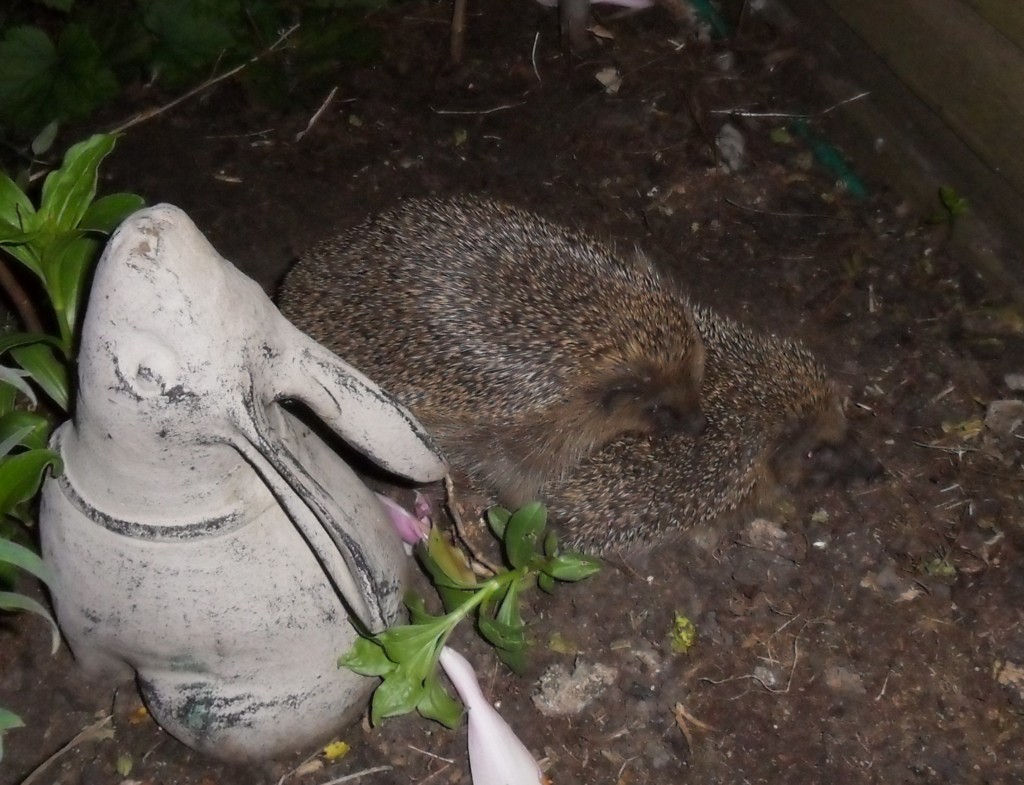Hedgehogs, those beloved garden visitors, embark on their family journey once they reach sexual maturity in their second year. From then on, they can breed annually until they are no longer able. The breeding season typically runs from April to September, peaking in May and June – a period known as ‘the rut’ in Britain, filled with noisy courtship rituals.
Nesting and Preparing for Hoglets
Before the arrival of their young, mother hedgehogs diligently prepare a safe and secure nest. They seek out secluded spots, often under sheds, in compost heaps, or beneath dense vegetation, creating a cozy haven lined with leaves and grass. This nest serves as both a birthing chamber and a nursery for their vulnerable offspring, known as hoglets. The mother hedgehog prioritizes a location that offers protection from predators and the elements, ensuring a safe environment for her young family to thrive in their early weeks.
Birth and Initial Care of Hoglets
Hedgehog pregnancies last around 35 days, culminating in the birth of a litter typically ranging from four to five hoglets, though it can be as large as seven. Born blind, deaf, and with soft spines, hoglets are completely reliant on their mother for survival. The mother hedgehog provides round-the-clock care in the initial days, keeping her hoglets warm and nourished within the confines of the nest. She nurses them frequently with rich milk, essential for their rapid growth and development during this critical stage. Disturbance during this period can be highly detrimental; a stressed mother may desert or, in extreme cases, even eat her young. To avoid such risks, it’s crucial to leave hedgehog nests undisturbed if discovered.
 Mother hedgehog and her hoglets in a nest, showcasing maternal care and newborn hedgehogs.
Mother hedgehog and her hoglets in a nest, showcasing maternal care and newborn hedgehogs.
Nurturing and Weaning Hoglets
As hoglets grow, the mother hedgehog’s care evolves. Around three to four weeks old, the young hedgehogs begin to venture out of the nest, embarking on foraging expeditions alongside their mother. These trips are crucial learning experiences, where hoglets learn essential survival skills, such as finding food and navigating their environment under the watchful eye of their mother. She guides them, teaching them what to eat and how to locate food sources. This period of guided foraging lasts for approximately ten days, after which the young hedgehogs become independent and wander off to establish their own territories.
Protecting Hoglets from Danger
Mother hedgehogs are fiercely protective of their young. They are known to move their hoglets to a new nest location if they sense danger or disturbance, carrying them carefully in their mouths, one by one, to a safer place. This behavior, though sometimes alarming to witness, is a testament to their strong maternal instincts and commitment to their offspring’s safety. Beyond physically relocating them, the mother hedgehog will also defend her nest against potential threats, demonstrating considerable bravery when protecting her vulnerable young.
Conclusion: The Dedication of a Mother Hedgehog
Mother hedgehogs exhibit remarkable dedication in raising their young. From carefully constructing nests and providing constant warmth and nourishment in the early days, to guiding foraging trips and fiercely protecting their hoglets from harm, their maternal care is crucial for the survival of the next generation. Understanding and respecting this nurturing process is essential for anyone sharing their garden with these fascinating creatures. By providing undisturbed spaces and observing from a distance, we can help support mother hedgehogs in successfully raising their hoglets, ensuring these animals continue to thrive in our environment.

